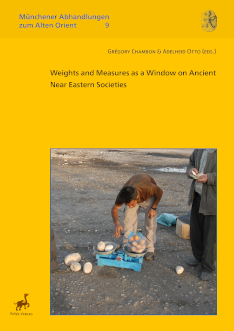MAAO-9 Grégory Chambon + Adelheid Otto
The study of weights and measures (metrology) of the Ancient Near East has long been understood as a valuable method for understanding ancient economic interactions and ways of quantification. However, the social value of metrology and the ubiquity of metrological actions and tools has not yet been fully recognized. Weighing and measuring are human processes that involve different people (experts and accountants, dealers and customers) and are based on culturally constructed representations such as the notions of justice, standardization and accuracy.
In this respect, epigraphic and archaeological sources complement each other. The epigraphic sources facilitate an approach towards weighing and measuring practices mainly through the point of view of the administrators of economic and political organisations, while archaeological material remains and depictions in images grant insight into the daily activities of private people involved in trade and exchange, measurement experts and palace or temple staff. The cross-referencing and interlacing of these sources, presented in this book by international experts and young scholars, aims to demonstrate how interdisciplinary studies of weights and measures provide a window on Ancient Near Eastern societies.
MAAO-9 (Münchener Abhandlungen zum Alten Orient, Volume 9)
Grégory Chambon / Adelheid Otto (eds.)
Weights and Measures as a Window on Ancient Near Eastern Societies
PeWe-Verlag 2023
30 x 21 cm — Hardcover
212 pages, with 109 mostly coloured figures in the text
ISBN: 978-3-935012-63-8
price: 65,00 €
© PeWe-Verlag 2023
Date of publication: October 2023


